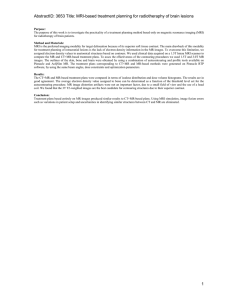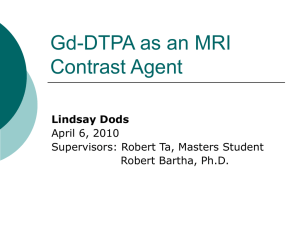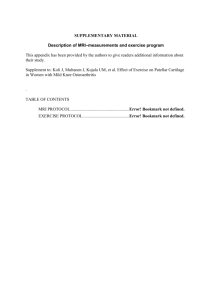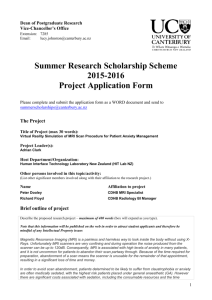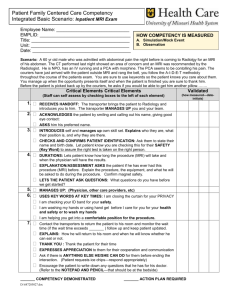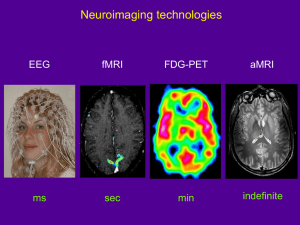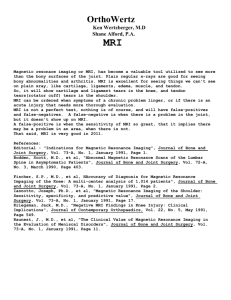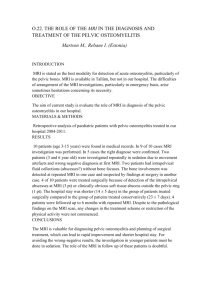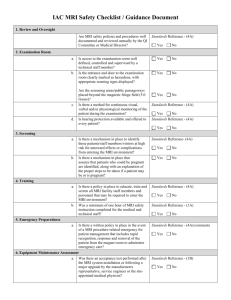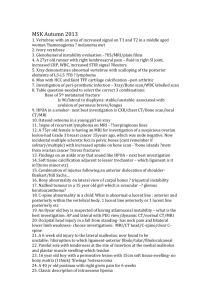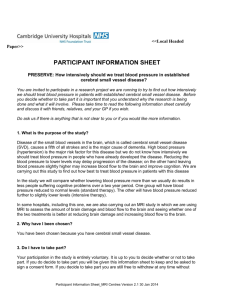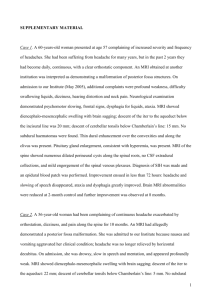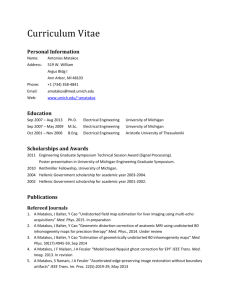A Unifying Method to Derive Electron Density From MRI for
advertisement
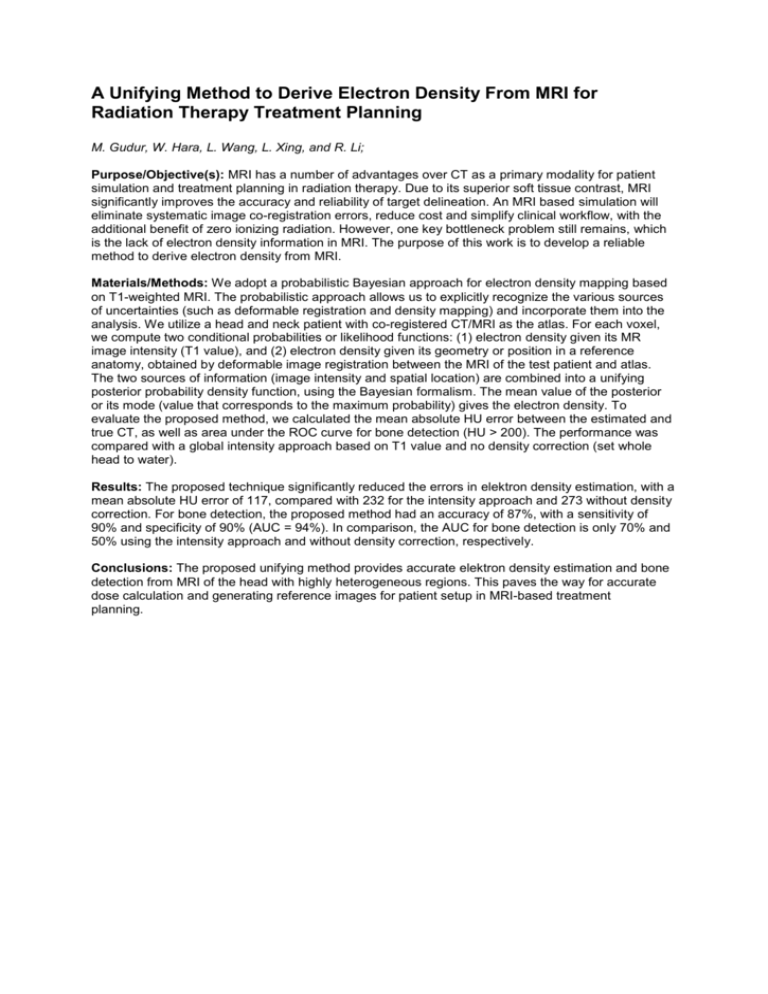
A Unifying Method to Derive Electron Density From MRI for Radiation Therapy Treatment Planning M. Gudur, W. Hara, L. Wang, L. Xing, and R. Li; Purpose/Objective(s): MRI has a number of advantages over CT as a primary modality for patient simulation and treatment planning in radiation therapy. Due to its superior soft tissue contrast, MRI significantly improves the accuracy and reliability of target delineation. An MRI based simulation will eliminate systematic image co-registration errors, reduce cost and simplify clinical workflow, with the additional benefit of zero ionizing radiation. However, one key bottleneck problem still remains, which is the lack of electron density information in MRI. The purpose of this work is to develop a reliable method to derive electron density from MRI. Materials/Methods: We adopt a probabilistic Bayesian approach for electron density mapping based on T1-weighted MRI. The probabilistic approach allows us to explicitly recognize the various sources of uncertainties (such as deformable registration and density mapping) and incorporate them into the analysis. We utilize a head and neck patient with co-registered CT/MRI as the atlas. For each voxel, we compute two conditional probabilities or likelihood functions: (1) electron density given its MR image intensity (T1 value), and (2) electron density given its geometry or position in a reference anatomy, obtained by deformable image registration between the MRI of the test patient and atlas. The two sources of information (image intensity and spatial location) are combined into a unifying posterior probability density function, using the Bayesian formalism. The mean value of the posterior or its mode (value that corresponds to the maximum probability) gives the electron density. To evaluate the proposed method, we calculated the mean absolute HU error between the estimated and true CT, as well as area under the ROC curve for bone detection (HU > 200). The performance was compared with a global intensity approach based on T1 value and no density correction (set whole head to water). Results: The proposed technique significantly reduced the errors in elektron density estimation, with a mean absolute HU error of 117, compared with 232 for the intensity approach and 273 without density correction. For bone detection, the proposed method had an accuracy of 87%, with a sensitivity of 90% and specificity of 90% (AUC = 94%). In comparison, the AUC for bone detection is only 70% and 50% using the intensity approach and without density correction, respectively. Conclusions: The proposed unifying method provides accurate elektron density estimation and bone detection from MRI of the head with highly heterogeneous regions. This paves the way for accurate dose calculation and generating reference images for patient setup in MRI-based treatment planning.


